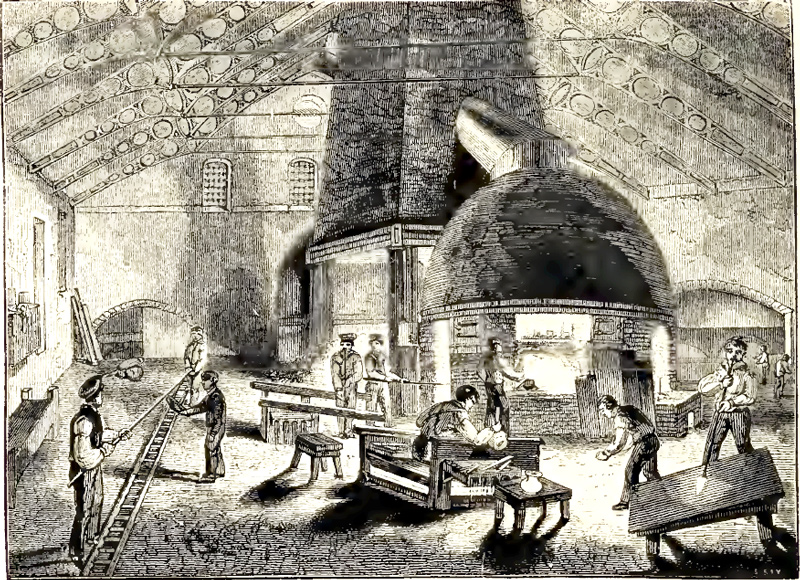Meriwether Lewis is in Pittsburgh having a military barge built prior to departing down the Ohio River. The industry of the area was described by Thaddeus Harris during his 1803 visit.
Making Paper
The Pictorial Gallery of Arts, Figure 706[1]From Robert M. Palmer, The Pictorial Gallery of Arts (London: Charles Knight and Co., 1905), page 168, downloaded from historicpittsburgh.org/islandora/object/pitt%3A31735060444753.
Pittsburgh Industry
[Friday, April 15, 1803]There are two printing-offices, each of which issue a weekly news-paper; and many mechanics, who carry on most of the manufactures that are to be met with in any other part of the United States. Two glass-houses have been lately erected, and are wrought to great advantage. They make window-glass, bottles, &c. This is an establishment of the first importance to this part of the country; for the transportation of these brittle articles from Philadelphia over the mountains has been attended with much hazard, as well as expense. Articles of cabinet work are, also, made at Pittsburg[h] of their native woods, which supply many of the settlements on both sides of the Ohio and Mississippi. The furniture made of the black walnut, wild cherry, and yellow birch, is very strong and handsome, and admits of a beautiful polish. The tinplate manufactory, that for cutting nails, and the smiths’ shops for making axes and farming utensils, find a ready and extensive market for all their articles.
—Thaddeus Harris[2]Thaddeus Harris, The Journal of a Tour into the Territory Northwest of the Alleghany Mountains Made in the Spring of the Year 1803, p. 41–2 in Reuben G. Thwaites, Travels West of the Alleghanies … Continue reading
Making Bottles
Making bottles is described by Robert Palmer:
A work-man takes a hollow tube, dips the end into a pot of melted glass in the furnace, works this about on a flat iron plate until it assumes a cylindrical form, and pinches it at a particular spot to form a narrow portion for the neck of the bottle . . . . He opens the mould, inserts the mass of white hot pasty glass into it, closes the mould by means of a string held in his hand, and blows through the tube. The effect of this is, that while the blowing gives hollowness and form to the interior of’ the mass of glass, the mould within which it is confined determines the size and form of the exterior. The mould is then opened, the bottle taken out, and after being detached from the iron tube, is finished at the mouth and neck by another workman by a few simple touches with equally simple tools.[3]Palmer, 168.
Notes
| ↑1 | From Robert M. Palmer, The Pictorial Gallery of Arts (London: Charles Knight and Co., 1905), page 168, downloaded from historicpittsburgh.org/islandora/object/pitt%3A31735060444753. |
|---|---|
| ↑2 | Thaddeus Harris, The Journal of a Tour into the Territory Northwest of the Alleghany Mountains Made in the Spring of the Year 1803, p. 41–2 in Reuben G. Thwaites, Travels West of the Alleghanies (Cleveland: The Arthur H. Clark Co., 1904), p. 342–43. |
| ↑3 | Palmer, 168. |

